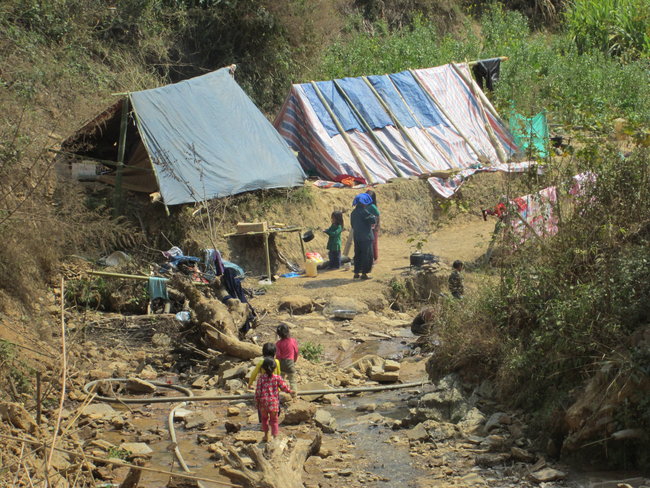NANSAN – Chinese authorities last week issued an order restricting access to the Kokang border, where the number of refugees continues to swell.
The order on 26 February from the Lincang district authorities, requiring official permission for non-locals to access border areas, has caused dismay among Kokang voluntary social welfare groups, who are now being limited from assisting refugees.
A volunteer standing beside a truck of supplies last Saturday in the Chinese border town of Nansan, opposite Laogai, said he had been planning to send the aid to refugees northwards along the border, but had been blocked from doing so.
While official refugee sites, such as the large “125” camp at Nansan, have been receiving Chinese government aid, remote unofficial camps, mostly to the north of Nansan, have been ignored by the authorities and must rely on donations.
Already struggling to cope with needs of perhaps tens of thousands of refugees, volunteers now have to request permission to make any aid delivery. They are also being instructed not to take photos of the refugees.
While the intent of these restrictions remains unclear, they are not deterring the continuing influx of refugees. At one unofficial site an hour’s drive north of Nansan, over 4,000 refugees, mostly ethnic Kokang and Palaung, have set up makeshift plastic shelters along a small stream that forms the border.
Hundreds who had sought sanctuary deeper inside China were pushed back to that site last Friday. With little space along the valley, many have been forced to set up shelters on the Kokang side of the stream, despite the lack of security.
[related]
One refugee from the village of Nan Ba Haw, a day’s journey from the border, described how his over 80-year-old mother had been killed, apparently by Burmese government soldiers, a week earlier.
“I had gone to round up our pigs, when I heard an explosion nearby. I looked round and saw a Burmese soldier in the distance,” he said. “I started running back to my house, and heard shots fired after me. When I reached the house, my mother told me to run away quickly. I went and hid. When I came back, I called out to her, but there was no answer. I went inside and found her lying dead on the floor. She had been shot in the back.”
Incidents such as these are causing entire villages to empty into China. Whole extended families, together with horses, buffaloes and farming vehicles, are arriving at the border each day.
Ad hoc shelters and sanitation arrangements in unofficial sites, a far cry from the orderly rows of tents set up by Chinese authorities in official sites, are causing concern among aid volunteers about potential disease outbreaks.
“We can barely cope now,” said a volunteer. “When the rains come, the situation is going to get much worse.”
Nang Noom is a Shan aid worker.



